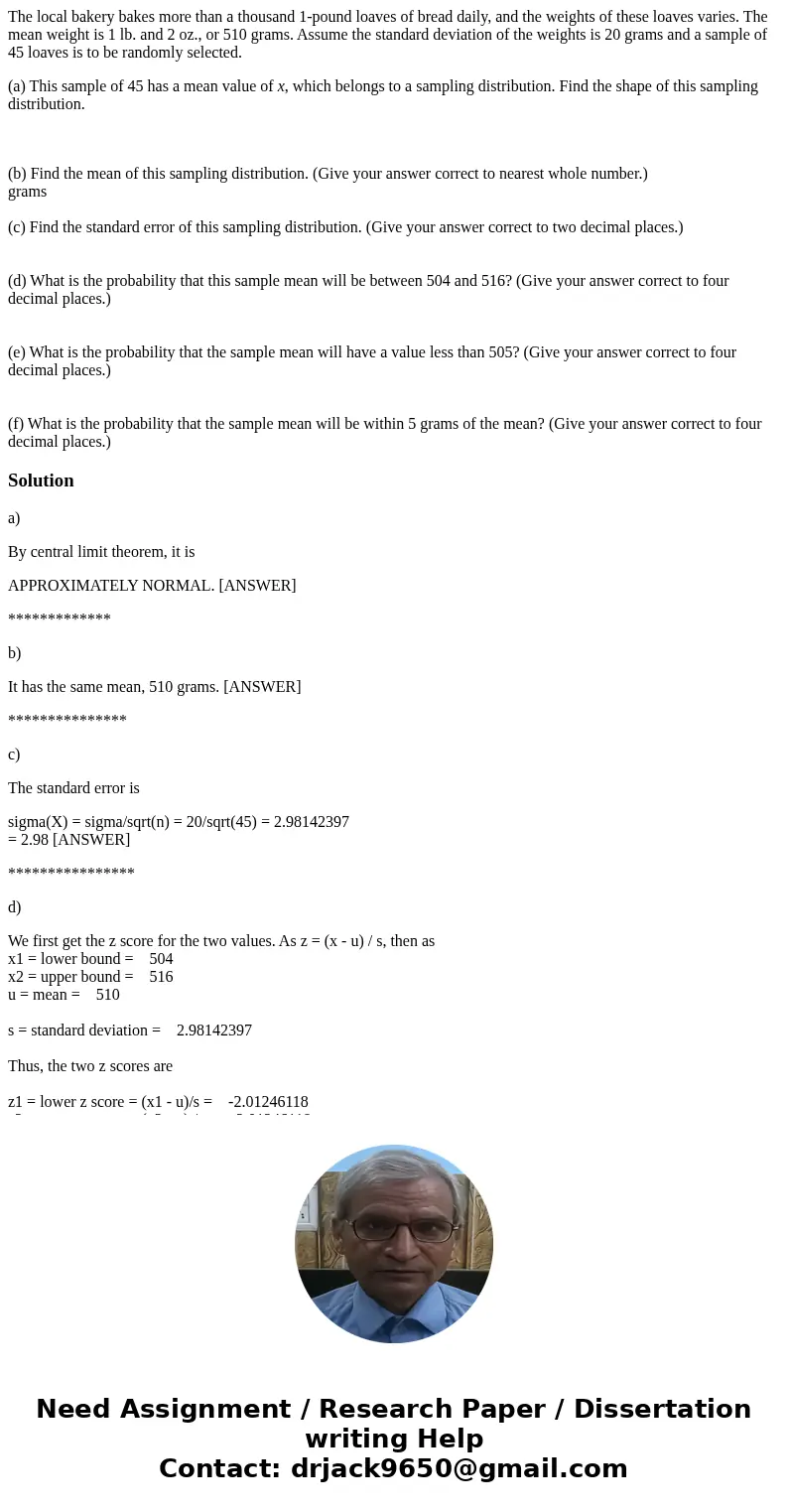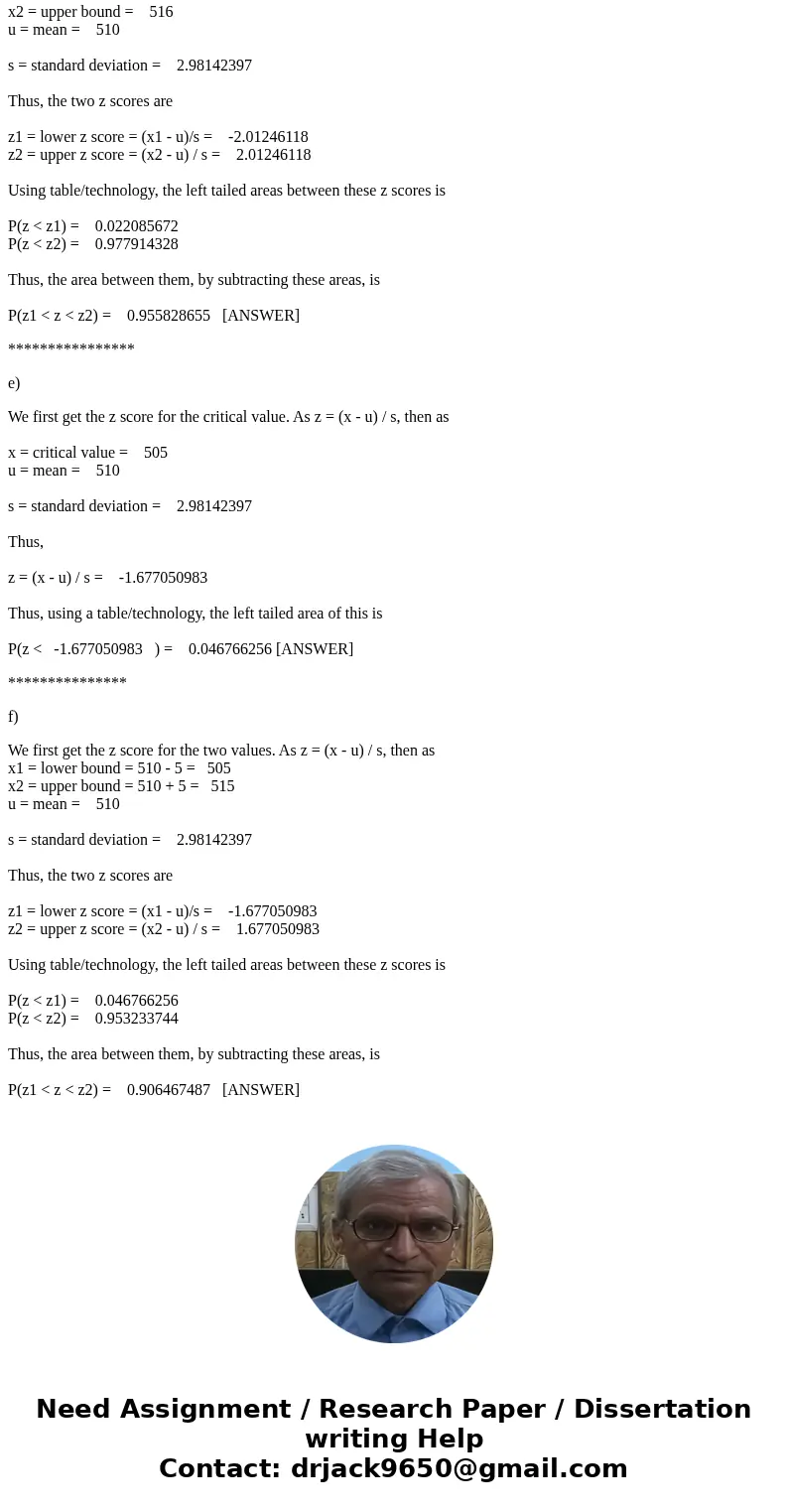The local bakery bakes more than a thousand 1pound loaves of
The local bakery bakes more than a thousand 1-pound loaves of bread daily, and the weights of these loaves varies. The mean weight is 1 lb. and 2 oz., or 510 grams. Assume the standard deviation of the weights is 20 grams and a sample of 45 loaves is to be randomly selected.
(a) This sample of 45 has a mean value of x, which belongs to a sampling distribution. Find the shape of this sampling distribution.
(b) Find the mean of this sampling distribution. (Give your answer correct to nearest whole number.)
grams
(c) Find the standard error of this sampling distribution. (Give your answer correct to two decimal places.)
(d) What is the probability that this sample mean will be between 504 and 516? (Give your answer correct to four decimal places.)
(e) What is the probability that the sample mean will have a value less than 505? (Give your answer correct to four decimal places.)
(f) What is the probability that the sample mean will be within 5 grams of the mean? (Give your answer correct to four decimal places.)
Solution
a)
By central limit theorem, it is
APPROXIMATELY NORMAL. [ANSWER]
*************
b)
It has the same mean, 510 grams. [ANSWER]
***************
c)
The standard error is
sigma(X) = sigma/sqrt(n) = 20/sqrt(45) = 2.98142397
= 2.98 [ANSWER]
****************
d)
We first get the z score for the two values. As z = (x - u) / s, then as
x1 = lower bound = 504
x2 = upper bound = 516
u = mean = 510
s = standard deviation = 2.98142397
Thus, the two z scores are
z1 = lower z score = (x1 - u)/s = -2.01246118
z2 = upper z score = (x2 - u) / s = 2.01246118
Using table/technology, the left tailed areas between these z scores is
P(z < z1) = 0.022085672
P(z < z2) = 0.977914328
Thus, the area between them, by subtracting these areas, is
P(z1 < z < z2) = 0.955828655 [ANSWER]
****************
e)
We first get the z score for the critical value. As z = (x - u) / s, then as
x = critical value = 505
u = mean = 510
s = standard deviation = 2.98142397
Thus,
z = (x - u) / s = -1.677050983
Thus, using a table/technology, the left tailed area of this is
P(z < -1.677050983 ) = 0.046766256 [ANSWER]
***************
f)
We first get the z score for the two values. As z = (x - u) / s, then as
x1 = lower bound = 510 - 5 = 505
x2 = upper bound = 510 + 5 = 515
u = mean = 510
s = standard deviation = 2.98142397
Thus, the two z scores are
z1 = lower z score = (x1 - u)/s = -1.677050983
z2 = upper z score = (x2 - u) / s = 1.677050983
Using table/technology, the left tailed areas between these z scores is
P(z < z1) = 0.046766256
P(z < z2) = 0.953233744
Thus, the area between them, by subtracting these areas, is
P(z1 < z < z2) = 0.906467487 [ANSWER]


 Homework Sourse
Homework Sourse